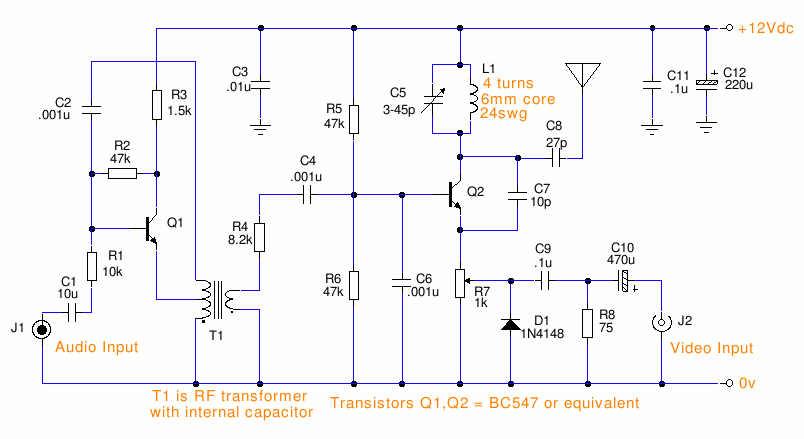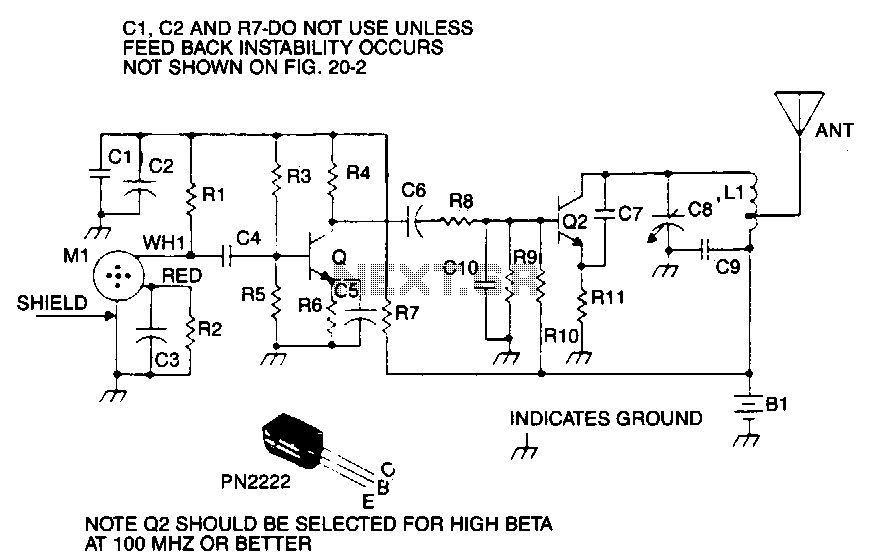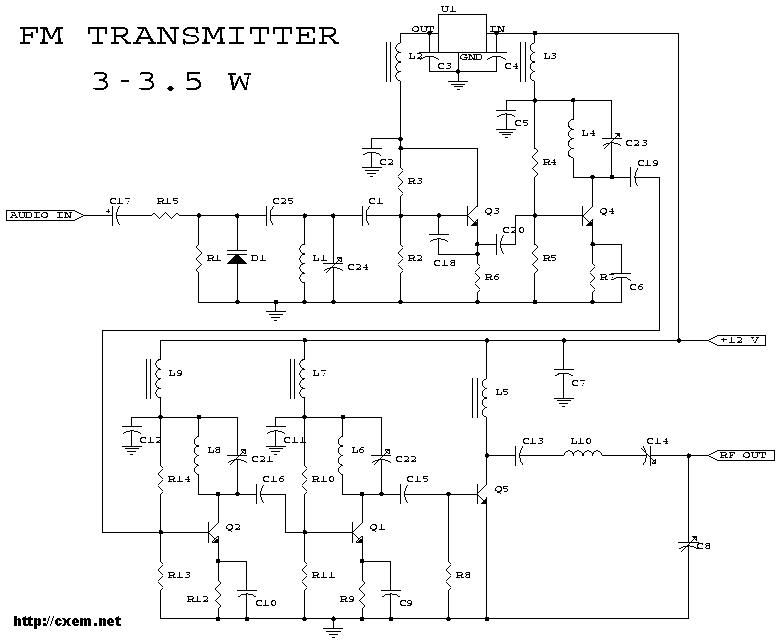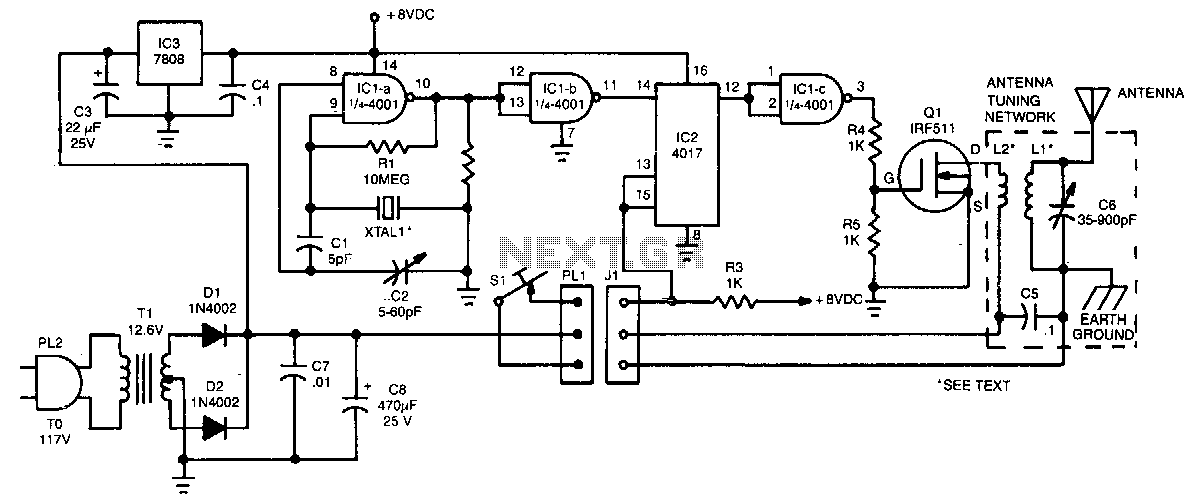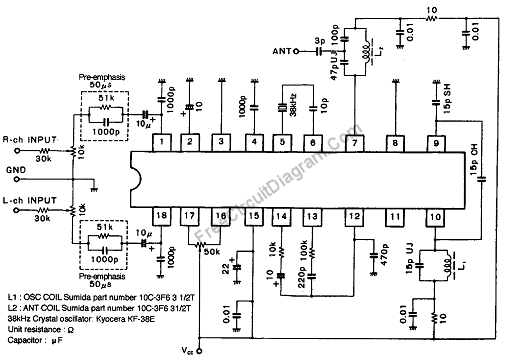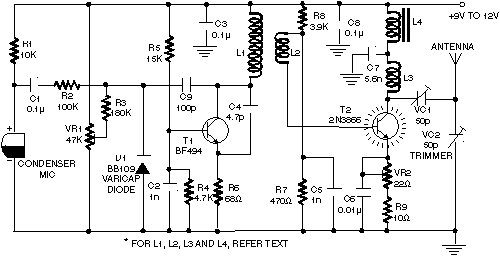
Ir Transmitter
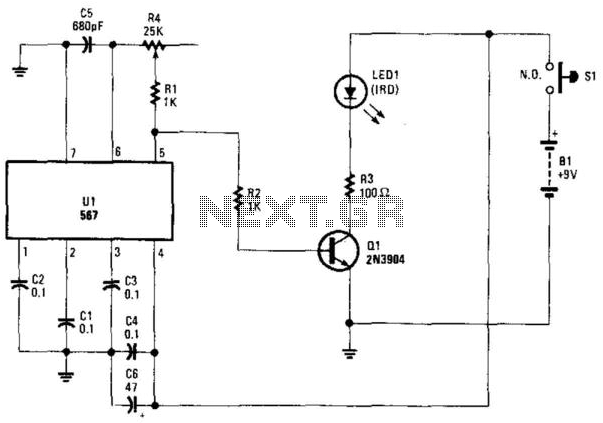
Using an NE567 as a tone oscillator, this circuit produces an infrared (IR) signal from the LED, which is modulated with a square wave. LED1 is an IR-emitting LED. The modulation enhances performance under high ambient light conditions.
The circuit employs an NE567 phase-locked loop (PLL) integrated circuit, which is configured to function as a tone oscillator. The NE567 generates a square wave output, which is crucial for modulating the infrared signal emitted by LED1. This modulation allows the IR signal to be transmitted more effectively, particularly in environments with significant ambient light interference, which can often cause issues in IR communication systems.
The LED1, an infrared-emitting diode, is driven by the output of the NE567. When the NE567 operates, it produces a square wave that rapidly turns the LED on and off, creating a pulsed IR signal. This pulsing action is essential for encoding data onto the IR signal, facilitating communication with compatible receivers that can demodulate the signal back into its original form.
In addition to the NE567 and LED1, passive components such as resistors and capacitors may be included in the circuit to set the frequency of oscillation and stabilize the operation of the NE567. The choice of these components will directly influence the modulation frequency and the overall performance of the circuit. Proper selection is crucial to ensure that the modulation frequency remains within the optimal range for the intended application.
Furthermore, the implementation of this circuit design allows for improved signal integrity in environments where ambient light can mask or distort the IR signals. By utilizing modulation techniques, the circuit can achieve reliable communication over varying distances and under different lighting conditions, making it suitable for various applications, including remote controls and data transmission systems in consumer electronics. Using an NE567 as a tone oscillator, this circuit produces an IR signal from the LED, which is modulated with a square wave. LED1 is an IR-emitting LED. The modulation helps improve performance under high ambient light conditions. 🔗 External reference
The circuit employs an NE567 phase-locked loop (PLL) integrated circuit, which is configured to function as a tone oscillator. The NE567 generates a square wave output, which is crucial for modulating the infrared signal emitted by LED1. This modulation allows the IR signal to be transmitted more effectively, particularly in environments with significant ambient light interference, which can often cause issues in IR communication systems.
The LED1, an infrared-emitting diode, is driven by the output of the NE567. When the NE567 operates, it produces a square wave that rapidly turns the LED on and off, creating a pulsed IR signal. This pulsing action is essential for encoding data onto the IR signal, facilitating communication with compatible receivers that can demodulate the signal back into its original form.
In addition to the NE567 and LED1, passive components such as resistors and capacitors may be included in the circuit to set the frequency of oscillation and stabilize the operation of the NE567. The choice of these components will directly influence the modulation frequency and the overall performance of the circuit. Proper selection is crucial to ensure that the modulation frequency remains within the optimal range for the intended application.
Furthermore, the implementation of this circuit design allows for improved signal integrity in environments where ambient light can mask or distort the IR signals. By utilizing modulation techniques, the circuit can achieve reliable communication over varying distances and under different lighting conditions, making it suitable for various applications, including remote controls and data transmission systems in consumer electronics. Using an NE567 as a tone oscillator, this circuit produces an IR signal from the LED, which is modulated with a square wave. LED1 is an IR-emitting LED. The modulation helps improve performance under high ambient light conditions. 🔗 External reference
Warning: include(partials/cookie-banner.php): Failed to open stream: Permission denied in /var/www/html/nextgr/view-circuit.php on line 713
Warning: include(): Failed opening 'partials/cookie-banner.php' for inclusion (include_path='.:/usr/share/php') in /var/www/html/nextgr/view-circuit.php on line 713
